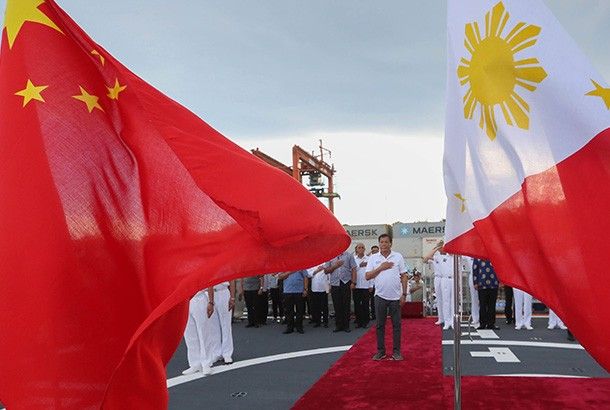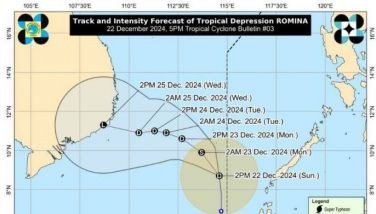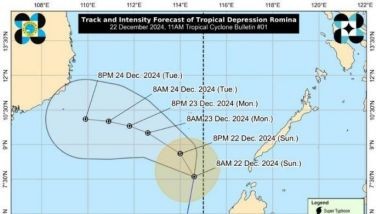Regional dynamics and mechanisms for security cooperation: A Philippine perspective

(APPFI Commentary) In 2013, President Xi Jinping announced an overarching and yet vague vision that would connect China to the former Silk Road Corridor.
By the 19th National Congress of the Chinese Communist Party, the Belt and Road Initiative (BRI) was written into the CCP’s constitution and now forms the crux of China’s foreign policy. While the BRI has at its core the narrative of connectivity, it also serves several strategic functions, not least of which is that it bolsters economic growth in China’s southern and western provinces in the hopes that a reduction in huge economic inequalities in these areas would lessen the likelihood of separatism and terrorism.
The BRI is also meant to drive economic growth in China’s western borders, which can make for a better market for Chinese goods, and to develop markets along the Belt and Road for China’s higher-end manufactured goods, which will inevitably lead to the entrenchment of these markets in Chinese industrial standards.
Most importantly perhaps is the geopolitical function that the BRI plays as it puts China in the center of a web of linkages and interconnections, including multilateral institutions and arrangements. Moreover, this look-west strategy that is hinged on accessing markets via continental means helps China overcome its maritime vulnerability.
The Chinese narrative of connectivity parallels the United States’ vision. President Donald Trump’s November 2017 trip to Asia raised the term Indo-Pacific to prominence. The release of the National Security Strategy a month later solidified the Indo-Pacific frame and the preference for the revival of the Quadrilateral Security Dialogue, which involves the US, Australia, Japan and India.
While it can be argued that the vision of a free and open Indo-Pacific is simply a redefinition of the Obama administration’s rebalance to Asia, it nonetheless offers a compelling alternative to China’s BRI, especially in light of the US’ withdrawal from the Trans-Pacific Partnership. The Indo-Pacific narrative’s lack of an economic component, however, makes it an ambiguous strategy and puts the focus of the Trump administration’s Asia policy solely on security matters.
As compelling as these strategic narratives are, their success depends as much on an understanding of the nuances of regional affairs. Both the BRI and the Indo-Pacific frames imply efforts that straddle the regional security complexes (RSC) of at least three sub-regions: East Asia, Southeast Asia and South Asia. Although commendable in terms of the wide arc of initiatives, a sweeping strategy that neglects the distinct set of circumstances, dynamics, and narratives within each sub-region will be difficult to sustain.
The East Asian RSC is shaped largely by North Korea’s provocative militarism and China’s muscle-flexing. Among the strategic options to address the North Korean crisis are a military strike, leadership replacement and containment.
Trump’s announcement to meet with Kim Jong-un may well change the game, not just in terms of international security, but also in terms of the state of US leadership today. The meeting, which is set to take place in May 2018, hinges on the role of China as a guarantor of the outcome.
This comes as no surprise, given China’s so-called muscle-flexing of late. Xi’s continuing emphasis on a strong military and the country’s increasing defense budget underscores China’s intent to be a core player in regional – and international – affairs.
Meanwhile, Southeast Asia’s defining features remain centered on the role of ASEAN. ASEAN has been seen as being in the “driver’s seat” of regionalism, but lately, it has been accused short of being a backseat driver.
This is largely due to divergences in member states’ interests that more often than not are manifested in paralyzing the entire organization. Also, the organization has so far been unable to engage in normative innovation despite evidence that it is these very norms (consensus and non-interference) that hold it back from effectively addressing regional crises.
Another challenge that complicates the role of ASEAN is captured by the concept of overlay, which is a term used to describe the significant influence of extra-regional actors in intra-regional affairs. For example, the non-issuance of a joint communiqué at the end of the ASEAN foreign ministers’ meeting in Phnom Penh in July 2012 is symptomatic of intra-ASEAN divisions that are fueled by extra-ASEAN pressures.
Another incident is the ASEAN-China special foreign ministers’ meeting in Kunming in June 2016 when Malaysia released and then retracted a media statement that voiced out serious concerns about the South China Sea. ASEAN ultimately did not issue any joint statement. Similar to Phnom Penh in 2012, Kunming pointed to overlay that spurred intra-ASEAN divisions.
The South Asian RSC is rife with traditional rivalries. The India-Pakistan relationship, for instance, is parlous with severe, ongoing mistrust and unresolved border issues. Complicating matters is that both of them are nuclear powers and possess large militaries.
The India-China relationship is likewise characterized with an intense rivalry, with the Indian Ocean increasingly becoming the playing field. India itself is the proverbial elephant in the room. It dominates in most ways and has both strategic advantage and reach.
To avoid Indian domination, other actors in the region hedge with China. At the same time, an ever powerful China can pose challenges to the sub-region as it tackles widespread development and economic issues, not least of which are population growth, poverty and underdevelopment, and unemployment. Adding to this complexity is the variable engagement of the US, which arguably may move in a new direction with the Indo-Pacific frame.
A deep understanding of these factors makes for an effective and more sustainable Asia strategy. Multilateral arrangements continue to be important platforms for cooperation, but at their core are strong and stable bilateral relationships. In this sense, alliances remain as the most efficient bilateral way of mitigating the effects of anarchy.
The hub-and-spokes model that the US implemented since the early post-World War II era may be fraught with contemporary challenges, but the foundation is sound. In order to keep up with the times and maintain the positive effects of such a structure, the spokes must be able to connect with each other.
Here is where the Philippines can play an active role. Given the tense situation in the South China Sea, the Philippines is in a position to reach out to other regional actors and establish better relations. An independent foreign policy does not mean moving forward in isolation and without regard to the interdependence of actors and issues.
Other than being a long-standing ally of the US, the Philippines can likewise take advantage of its position vis-à-vis China. The Duterte administration’s desecuritization of the South China Sea issue redefines the Philippines bilateral relationship with the rising power. The momentum of such a foreign policy can be sustained by ensuring that domestic policies complement and are aligned with it.
It must likewise be emphasized that a reinvigoration of ties with China should not come at the expense of the alliance with the United States. For a small country like the Philippines, it is better to hedge than to be backed at a corner with zero or limited maneuverability.
Apart from harnessing bilateral relationships, another area of cooperation that has the potential for positive results are strategic and comprehensive partnerships, of which the ASEAN-China Strategic Partnership is a good example.
Purportedly a new way of “doing” international relations, these partnerships are structured collaborations between states and are different from alliances or coalitions. They are more flexible than alliances since they are neither targeted at a specific country, nor contain binding military commitments. They are best understood as a new security practice, and they likewise signal the emergence of new forms of security governance.
With economic exchange as a key driver of partnership, these relationships can then stimulate the development of institutional links at governmental and non-governmental levels. Again, the Philippines can leverage its position as an emerging economy and tap the creation of such partnerships. There are few reasons for turning our backs on the international community, and conversely, there are plenty of reasons for remaining actively engaged.
Great power rivalry is once again on the horizon of Asia. China’s strategic narrative is encapsulated in the BRI, while the US utilizes the Indo-Pacific frame. The success of either – or both – of these visions hinges on an appreciation of the nuances and realities of the various sub-regional security dynamics of East Asia, Southeast Asia, and South Asia. Knowledge about how to mobilize various platforms, whether multilateral or bilateral, will also aid in the sustainability of any Asia policy.
Dr. Charmaine Misalucha-Willoughby is Associate Professor in the International Studies Department of De La Salle University in Manila, Philippines. Her areas of specialization are ASEAN’s external relations, security cooperation, and critical international relations theory. She was a Joint Fellow in the Institute of East Asian Studies and the Käte Hamburger Kolleg Centre for Global Cooperation Research at the University of Duisburg-Essen in Germany, an Advanced Security Cooperation Fellow (ASC15-2) at the Daniel K. Inouye Asia-Pacific Center for Security Studies in Honolulu, a Visiting Research Fellow under a Japan Foundation grant in the Osaka School of International Public Policy at Osaka University in Japan, and a recipient of the inaugural US-ASEAN Fulbright Program in the School of International Service at American University in Washington, DC. She received her PhD from the S. Rajaratnam School of International Studies at the Nanyang Technological University in Singapore.
- Latest





























